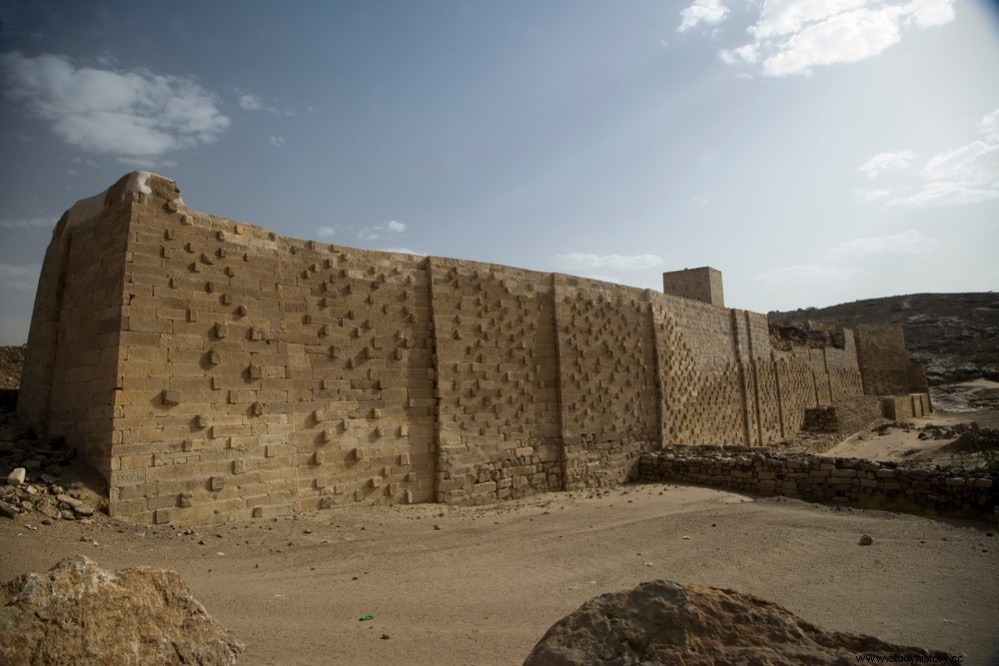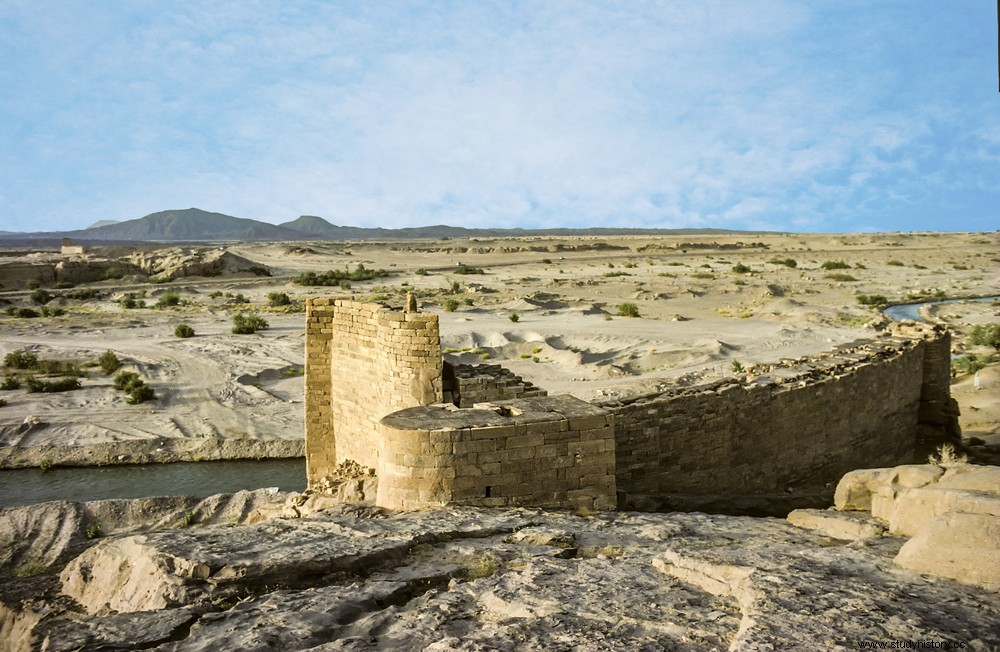Yemen is a relatively fertile country, the result of its location by the sea and its humid climate. It has valleys and mountains to the west, with heights exceeding 3,500 meters, but also desert plateaus to the east. Here is located the Rub al-Jali, considered the largest sand desert in the world.
Since ancient times, the inhabitants of the region developed a water management system through dams. From the coast of the Red Sea to the limits of the Rub al-Khali, the ruins of numerous of them, small and large, made of mud or stone, can be found today.
One of these old dams is the Great Marib Dam. Its ruins are very close to another modern one, in the vicinity of the city of the same name, ancient capital of the Kingdom of Saba, and in the valley of the Dhana River in the Balaq Hills.

At 14 meters high and more than half a kilometer (650 meters) long, it is considered one of the wonders of ancient engineering. It is the work of the Sabeans, a Semitic people who founded the kingdom around the 12th century BC. and controlled the spice trade in Arabia and Abyssinia. The dam was built in the 8th century BC. (according to an inscription dated to the time of Yatha'Amar Watar I, who reigned between 760-740 BC) in the place where a previous structure already existed, from 2000 BC, according to the latest archaeological findings.
The geographer Yaqut al-Hamawi, a Syrian Muslim of Greek origin who lived between the 12th and 13th centuries, described it as follows:
The original work was 4 meters high and was made of compacted earth, with a spillway and locks at its northern end. Around 500 B.C. a reform raised its height to 7 meters and reinforced the interior face with a stone coating.
Around 145 BC. the dam suffered a breach, which some researchers believe is the same one that caused the flooding of the Arim mentioned in the Koran, causing great devastation and massive emigration of people to surrounding lands.
The neighboring Himyarite kingdom took control of the dam around 115 BC. (it would come to conquer the entire kingdom of Saba around 280 AD) and would undertake works that, over four and a half centuries (until 325 AD), increased its height to 14 meters, as well as adding five drainage channels, two locks reinforced with masonry, a settling pond and a 1 kilometer long canal that ended in a distribution tank. All this allowed the irrigation of an area of 100 square kilometers.
It is known from inscriptions found on the dam itself that it was repaired at least twice before the arrival of Islam. The first time in the year 450 and the second in 543. The inscriptions detail both the costs and the number of workers who participated in the works.

The final disaster happened in 570–575 AD. The dam broke again causing a great flood, so much so that the Koran even picks it up again, and it was never repaired:
Unfortunately the ruins of the Marib High Dam were severely damaged in a Saudi Arabian airstrike on May 31, 2015.
